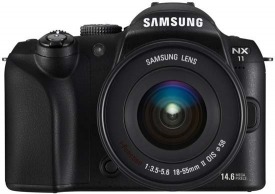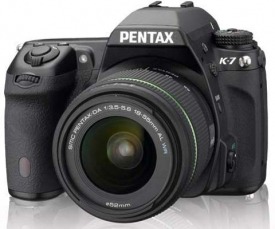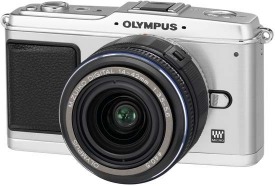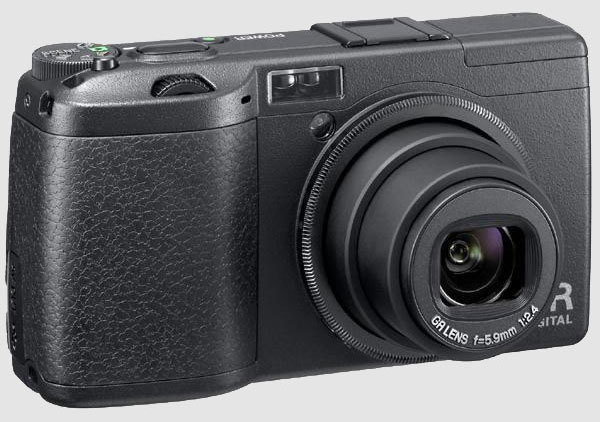TOPIC: APS-C
Pandemic camera
8th September 2024Back at the end of 2019, I acquired a Canon EOS 90D, possibly the swansong for mid-range Canon SLR cameras. Much effort is going into mirrorless cameras, yet I retain affection for SLR cameras because of their optical viewfinders. That may have been part of the reason for the acquisition, when I already had an ageing Pentax K5 Mark II. Buying SLR cameras is one way to keep them in production.
Little did I know what lay ahead in 2020 at that stage. Until recently, this was not to be a camera that travelled widely, such were the restrictions. Nevertheless, battery life is superb and handling is good too. The only absence is not having a level in the viewfinder like the Pentax K3 Mark III or maybe any mirrorless camera.
The newer file type of CR3 caught me out at first until I adjusted my command line tooling to deal with that. File sizes were larger as well, which has an impact on storage. Otherwise, there was little to change in my workflow. That would take other technological changes, like the increasing amount of AI being built into Adobe software.
Outdoor photography is my mainstay, and it excelled at that. The autofocus works well on its 24 to 135 mm zoom lens, except perhaps from focussing on skyscapes at times. Metering produced acceptable results, though it differed from the Pentax output to which I had become accustomed. All in all, it slipped into a role like other cameras that I had.
Throughout 2020 and 2021, it provided the required service alongside other cameras that I had. The aforementioned Pentax remained in use, like an Olympus and another Canon. Overseas travel curtailed horizons, so it was around local counties like Cheshire, Derbyshire, Staffordshire and Shropshire. In September 2020, it travelled to Llandudno in North Wales, an exception to the general trend of English hikes and cycles.
Since then, it has been superseded, though. A Pentax K3 Mark III made it into my possession to become my main camera, returning me near enough to my pre-2020 practice. Curiosity about Canon mirrorless options added a Canon EOS RP and a 24 to 240 mm zoom lens. That has shorter battery life than is ideal, and its level is not as helpful as that on the Pentax K3 Mark III or the aforementioned Olympus. If anything, it may get replaced while the EOS 90D remains. My getting a new base in Ireland means that it has gone there to save me carrying a camera there from England. That should give it a new lease of life.
Dispensing with temptation as new cameras keep getting launched
26th January 2012Many manufacturers followed Olympus into the compact system camera market. Nikon joined late last year, though Canon hasn't yet entered. Olympus E-PL1 kits with 14-42mm zoom lenses tempted me at around £250. After researching competitors, my shortlist included the Samsung NX-11, Sony NEX-C3, and its higher-end model, the NEX-5N.

What eventually countered the allure of shiny objects was the question as to why I needed such an item. After all, I already possess a Pentax K10D DSLR and a Canon PowerShot G11, and these have been satisfying my photographic needs for a while now. While the DSLR may date from 2007, it is still working well for me and, if it ever needed replacing, I'd be going for another Pentax with the K-5 being a strong contender. The Canon is doing what's asked of it, so the recent launching of the G1 X isn't so tempting either.
The whole dalliance has me wondering about how photographic equipment changeovers come about. After all, it was around a decade ago with the DSLR revolution was in the offing if not in progress. Until then, film photography was predominant, but it looks as if it got as far as it could from a technological point of view when I look back at what happened. The digital photography area was new and untapped, so moving there offered new possibilities and purchases more easily justified. The result is that very few film cameras are being made nowadays. Ironically, it's film photography that now is untrammelled terrain for many, and it is holding its own too in an era when digital photography predominates.
The same sort of newness that came with digital photography also applies to CSC's to a certain extent. From the heritage of half-frame 35 mm film photography, Olympus has fashioned a different type of digital camera: essentially a compact with interchangeable lenses. Was it the fact that I have no CSC that caused me to be tempted, and has it happened to others too? Also, is that what got digital photography going in the first place?
It almost feels as if camera manufacturers have to keep bringing to market new models and new types of camera to stay in business. After all, Minolta had to sell its camera division to Sony when they failed to get going in the DSLR market quickly enough. The same thing might have happened to Pentax too, with the marque passing to first to Hoya, and then to Ricoh after the firm lost its independence.
What doesn't help is the lack of longevity of camera models. The coming of digital photography has exacerbated this situation, with models being launched at a frenetic rate. In the days of film photography, a model could last on the market for a few years and there was once a time when a twenty-year lifetime wouldn't have looked so ridiculous, though there were incremental improvements made over that time too. For instance, a Pentax K1000 wouldn't be the same at the end of its production run as it was at the start, though the model number may be the same. That world is gone.
SLR design has endured for about 50 years, but mirrorless technology now presents unprecedented competition. Even compact cameras offer live through-the-lens viewing. Olympus revived its film heritage by creating the E-P1 with interchangeable lenses. These descendants of the original half-frame 35mm PEN cameras appropriately use smaller micro four thirds sensors. Sony has developed translucent mirror technology that eliminates moving parts found in traditional SLRs. Canon experimented with this in the 1980's with film cameras but abandoned it. Meanwhile, Samsung and Panasonic produce mirrorless SLR-style cameras with live viewing and electronic viewfinders, suggesting full-size equivalents may be coming. Olympus's current teaser campaign has sparked speculation about a possible OM-D release.

In parallel with all this, Sony is making a good impression with their CSC's, the NEX series. These have APS-C sized sensors like many DSLR's and in compact bodies as well. However, the feel very much is that of a compact camera and some have complained of a like of buttons on them, even if the photographic quality is excellent. Samsung have gone for the same sensor size in their NX-11, while they have gone for SLR styling. That may be more suitable for some than having to find settings buried in menus.
We're living in an exciting yet unsettling period of camera technology evolution. Cameras are becoming smaller, and traditional still cameras now shoot videos too, though filmmaking remains a time-intensive hobby that doesn't interest me. Recent legal developments complicate original work, as shown by a successful copyright case based on Photoshop image processing. With countless images being created daily and potential changes allowing intellectual property claims in small claims courts, avoiding infringement becomes harder. Film photography seems appealing in contrast and remains viable despite Kodak's financial struggles. As tastes shift and film becomes novel again, the future is uncertain. Perhaps investing in a DSLR body makes sense before Compact System Cameras completely replace them. Camera technology has become interesting once more.
Temptations, temptations...
19th August 2009
The last time that I went out and bought a new camera was over two years ago, and I am minded not to make another purchase for a while. Apart from damage to the battery cover arising from a fall, my Pentax K10D has survived so far without a problem and I admit to being satisfied with the photos that it makes. Following a professional sensor clean, my Canon EOS 10D has been pressed into service over the past few months, too. Meanwhile, 6 and 10 megapixel sensors generate nowhere near the attention that might have been the case a few years back, but that's by the by. In fact, the megapixel race seems to have stalled, with features like video being added to photographic cameras over the last year and live screens coming to prominence as well. Neither would make me rush out to buy a new DSLR anyway, perhaps because having things the old way suits me just fine and megapixel counts never ever moved me in the first place either.
That's never to say that the likes of Pentax's K-7 or Canon's EOS 50D and 5D Mark II don't capture my attention with their promises of better quality. However, with things the way that they are in the world, I am more likely to retain my cash or maybe invest in new photo processing software for making the most of what I already have. Ideas for photography projects creep into my head when I get to looking over my online photo gallery and realise that not have my tastes changed, while my photographic eye has developed too. That seeing of things in a new light may mean that old subjects get revisited, and I don't need a new camera to do that.

High-end compact cameras such as Canon's G11 and Ricoh's GR Digital III do detain attention for a while but a brief look at their prices proves that you really got to need the portability and I never can justify the outlay when a DSLR will do all that I want from it, and perhaps even for less money. While I admit to pondering the purchase of a GR Digital to cover for the EOS 10D while it was away for cleaning, the Pentax came to be acquired when I realised that the versatility of a DSLR was too much to lose, even for a while. Olympus' E-P1 may have bridged the gap, but the old question of going miniature for the price of a full sized article recurs.
All in all, I am going to stick with what I have right now. We are coming to a time of year when things appear more golden and that combination of lighting and colour are what really matters, not how many megapixels are in your camera sensor unless you are making large prints or supplying stock libraries. As long as my cameras continue to deliver pleasing results, I'll stick with elevating my skills and taking my time over that task, even with all the announcements of new cameras at various exhibitions and shows.
Camera tales
20th January 2007Anyone who has ever been on HennessyBlog will know that I enjoy walking in the countryside and that I always have a camera with me when I do. Like many digital SLR owners, I am beginning to see the tell-tale spots in my photos that are caused by a dirty sensor. And it isn’t that I am continually changing lenses either: I rarely remove the Sigma 18-50 mm DC zoom lens that I use with the camera. Rather than trusting myself with the cleaning (I have had a go already without much success), I am giving serious consideration to letting the professionals take care of my Canon EOS 10D, my only digital camera. I have already been quoted something of the order of £35 by a Canon service centre not far from me and am seriously considering taking them up on the offer.
Of course, sending it away to them means that I will have to forego the ability to include photos with posts on HennessyBlog describing my walks in the kind of timescale to which I have become accustomed; of course, this is where digital really scores. I will still have a camera with me as film remains my mainstay, even in this digital age. The camera in question is another Canon, an EOS 30 that I acquired used from Ffordes Photographic. While taking a recent peek at their website, I have just spied a used EOS 1V going for £399, a song for what remains Canon’s top of the range film SLR. Yes, I am tempted but I must stay real. In fact, I did not pay full price for my EOS 10D. That was part of the run-out stock that 7dayshop.com were selling off at next to half of the EOS 10D’s original asking price in the wake of its being superseded by the EOS 20D (itself since replaced by the EOS 30D: digital is a fast-moving world).
Sending a camera away for attention is not new to me as I also acquired a used Minolta X-700 manual focus SLR, again obtained from Ffordes, and that needed a spot of maintenance after a year in my possession. There was a problem with the shutter that cost me £75 to get Minolta to fix. Now that Minolta as a camera maker is no more, I was wondering who would attend to it in the future. That question was answered by a recent look on the web: in the UK it is JP Service Solutions, a division of Johnson’s Phototopia. Konica Minolta retain this information on their website. Konica Minolta’s failure to capitalise effectively on the digital revolution in its early days, particularly in the SLR area where they gifted their competitors a massive head start, cost them their future in the photographic business and now Sony continues the mantle, a sad end to one of camera manufacturing’s great innovators.
Returning to my digital-less dilemma, I suppose that I could get another digital for backup duty; I have to admit that a DSLR is a bulky contraption to be carrying in airline luggage. The camera that has made it onto my wish list is Ricoh’s GR Digital, a highly regarded offering that follows in the great tradition of its film forbears, the GR 1 and GR 21. Given that my first 35 mm camera was a Ricoh, and I have it still, this would be a case of returning to my roots. Of course, having it on a wish list is very different from having it on the to-do list and finances will certainly dictate if the purchase is made, though a finance deal offered by Warehouse Express does make it more accessible. Maybe some day…
